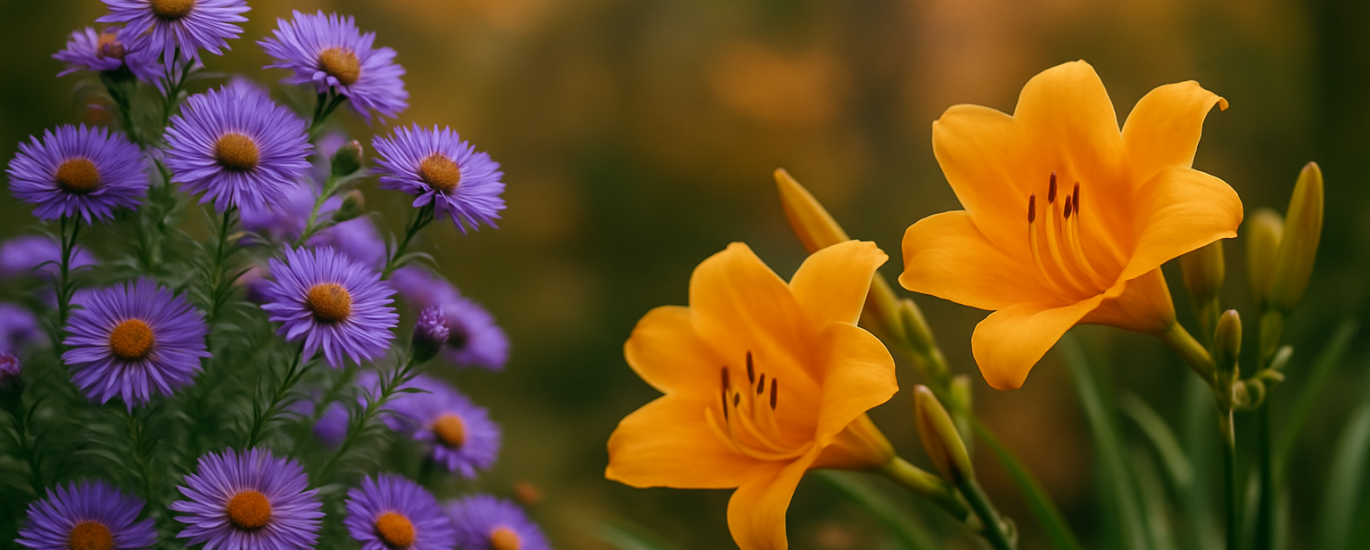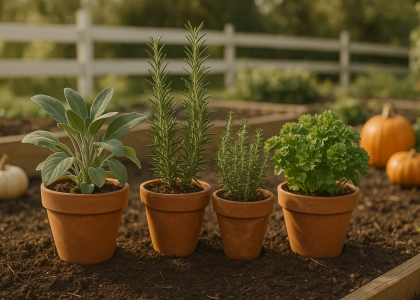Why Your Fall Garden Still Deserves Color
As summer fades, many gardens lose their vibrancy. But fall doesn’t have to mean dull flowerbeds. With the right plants and care, your garden can stay alive with color until the first frost. Asters and daylilies are two perennials that not only survive but thrive in cooler months, rewarding you with blooms that last longer than you might expect.
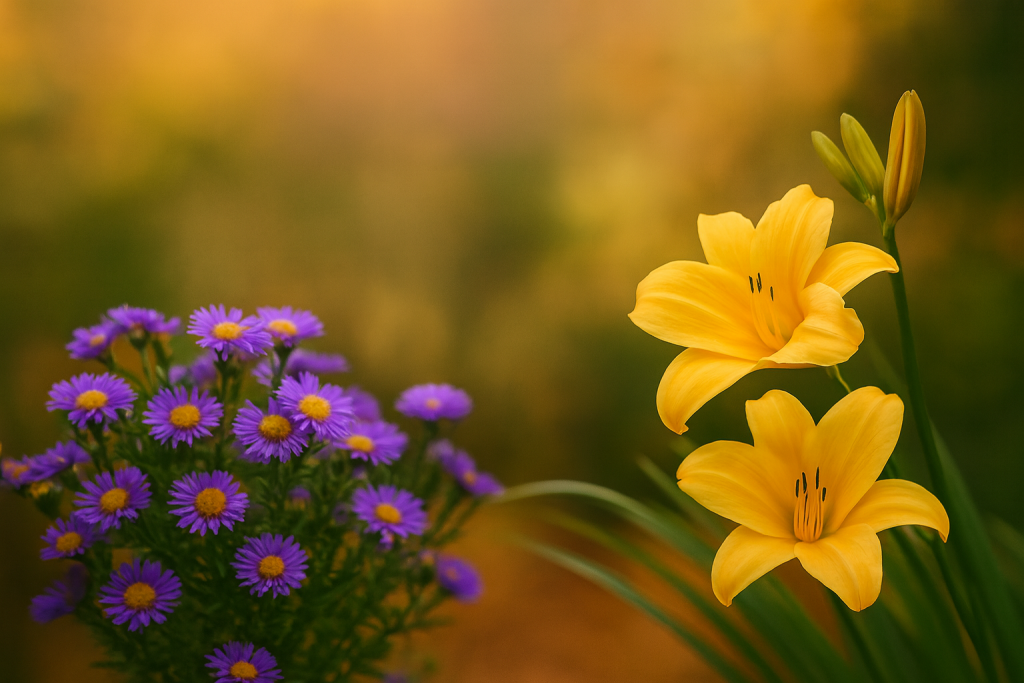
Meet the Stars of Fall
Asters: Autumn’s Daisy Lookalikes
- Botanical name: Symphyotrichum spp.
- Hardiness zones: USDA 3–8
- Bloom season: Late summer to mid-fall (Aug–Oct)
- Colors: Purple, pink, blue, and white
- Pollinator power: Essential late nectar source for bees and butterflies
Pro Tip: Pinch back asters in early summer to promote bushier growth and increase bloom density in fall.

Daylilies: Summer-to-Fall Survivors
- Botanical name: Hemerocallis spp.
- Hardiness zones: USDA 4–9
- Bloom season: Summer peak, with reblooming varieties extending into fall
- Notable cultivars: “Stella de Oro,” “Happy Returns,” “Pardon Me”
- Garden perks: Drought-tolerant, hardy, minimal fuss
Pro Tip: Deadhead spent flowers daily and cut back scapes (flower stalks) to encourage continuous blooming.
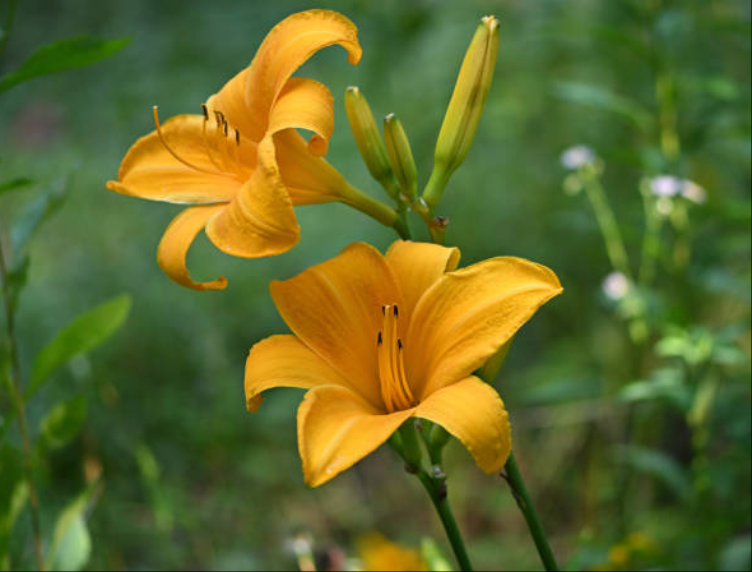
How to Extend the Bloom Season
- Deadhead Consistently
- Remove faded flowers before they go to seed. This keeps plants focused on producing new blooms.
- Fertilize Smart
- Use a low-nitrogen, phosphorus-rich fertilizer (e.g., 5-10-10) in late summer.
- Supports bud development without overstimulating leaf growth.
- Hydrate Deeply
- Water once a week with about 1 inch of water.
- For asters, ensure soil is evenly moist but never soggy.
- Mulch Matters
- Apply a 2–3 inch layer of organic mulch.
- Regulates root temperature, retains moisture, and protects during cool nights.
- Choose Reblooming Varieties
- Look for daylilies labeled as “reblooming” and compact asters bred for extended flowering.
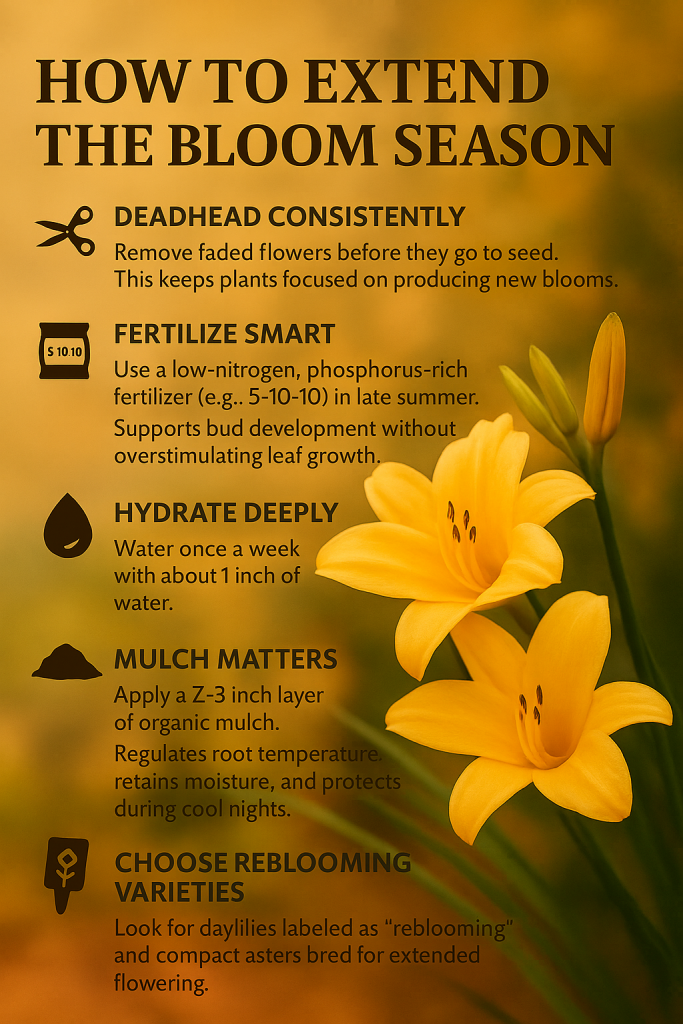
Design Ideas for Autumn Gardens
- Color Combos: Pair purple asters with yellow-orange daylilies for a striking contrast.
- Texture Play: Add ornamental grasses (Miscanthus, Pennisetum) for movement.
- Companion Plants: Mix with chrysanthemums or sedums for multi-layered fall interest.
- Container-Friendly: Dwarf asters and compact daylilies bring fall color to patios and balconies.
Quick Care Checklist (Printable PDF)
- Pinch asters in summer → bushier blooms
- Deadhead daylilies daily
- Fertilize with 5-10-10 in late summer
- Mulch 2–3 inches before frost
- Water deeply once per week
CTA: [Download FREE Printable Care Guide PDF]
FAQ: Your Fall Bloom Questions Answered
Q: Why are my asters not blooming in fall?
A: Likely causes include too much shade, lack of summer pinching, or nutrient imbalance (too much nitrogen).
Q: Can I grow daylilies in containers?
A: Yes! Choose dwarf reblooming varieties, provide at least 6 hours of sun, and refresh potting mix annually.
Q: How do I prevent daylily rust in autumn?
A: Ensure good air circulation, water at soil level, and remove infected leaves immediately. Copper fungicides may help in persistent cases.
Q: Will these perennials survive harsh winters?
A: In USDA zones 3–8 (asters) and 4–9 (daylilies), both overwinter well with mulch protection. In colder zones, container planting is recommended.
Asters and daylilies prove that fall doesn’t mean the end of beauty in your garden. With simple steps like deadheading, smart feeding, and mulching, you can enjoy weeks of extended blooms and a pollinator-friendly garden until frost.
👉 Save this guide
👉 Follow Greenmuse for more seasonal garden hacks

